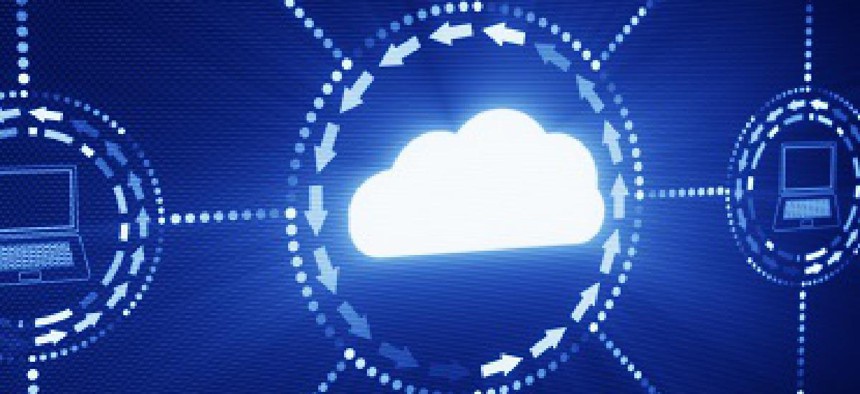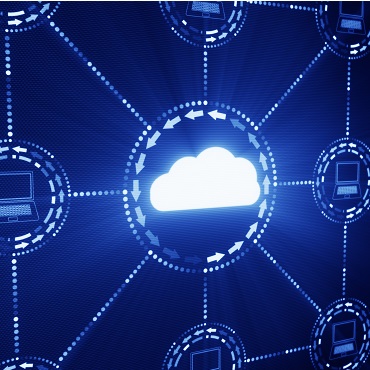FedRAMP and CDM offer a unified path to security in the cloud

By considering the link between the two programs, agencies can unite the dual demands of improving security and embracing the cloud.

In the timeless words of Yogi Berra, "When you come to a fork in the road, take it." Federal IT managers know all too well of the challenge of going down two paths. Two of the biggest have been the mandates to migrate to the cloud and to better secure government IT systems through continuous monitoring.
On the one hand, federal agencies have been directed to use a "cloud first" strategy, but they've been hesitant because of concerns about the security of their data in the cloud. On the other hand, the successful penetrations of agency networks and systems at the Office of Personnel Management, State Department and elsewhere have given agencies pause about the security of their systems and information.
Fortunately, federal IT leaders have two maturing programs designed to address those concerns: the Federal Risk and Authorization Management Program for ensuring security in the cloud, and the Continuous Diagnostics and Mitigation program for more quickly finding and fixing IT security risks. Each has their own priorities and particulars, which has kept them separate and distinct in the minds of many IT managers. But now is the time for agencies to begin viewing FedRAMP and CDM in tandem and thinking about how they can work in concert. By considering their linkage, agencies can chart a path that unites the dual demands of improving their security while also embracing the cloud.
Clouded reality -- then and now
Despite all the benefits and efficiencies that have been touted for consolidating systems in the cloud, federal executives still needed to be convinced that their sensitive data can be adequately protected. In reality, a good case can be made that today's cloud service providers are able to do an equal or better job of securing government data than many agencies can do for themselves.
For one thing, CSPs are more experienced in cloud security because that's the focus of their business, and they're using more mature and proven risk management processes. Another reason is that FedRAMP relies on a highly technical and comprehensive assessment (based on the National Institute of Standards and Technology's 800-53 set of security controls) to ensure that third-party CSPs meet government security standards and appropriately manage information risk.
FedRAMP officials raised the bar for cloud security when they released a draft of a new certification last year that provides the strongest authorization level yet for putting more sensitive data in the cloud. Establishing a higher baseline to protect sensitive data and personally identifiable information seems logical. But what's less obvious is that requiring a higher authorization level for storing sensitive data in the cloud also aligns with and enables the direction of the CDM program.
Continuous monitoring: From premises to cloud
Federal IT managers have gotten on board with continuous monitoring and moved from compliance-based security efforts to more agile, real-time risk management to find and fix vulnerabilities before they are exploited.
In the past year, the Department of Homeland Security has been launching CDM Phase 1 tools for agencies to manage their IT hardware and software assets, configuration settings and vulnerabilities. Those tools have mostly been in the form of products and software licenses. But interestingly, for the last grouping of 40 smaller agencies (task order 2F), DHS announced its intention to begin conducting CDM in the cloud to cut down on or eliminate the on-premises duplication across those smaller entities.
FedRAMP's higher baseline is significant to the CDM program as it evolves to the cloud because it would protect sensitive threat and vulnerability data with cloud-based CDM tools. DHS categorizes that data -- which is collected from agency sensors and systems and normalized and monitored in the cloud -- at the high impact level, so it requires stringent safeguards.
The initial cloud-based CDM would deliver Phase 1 capabilities and parts of Phase 2, giving smaller agencies the ability to better manage their access controls, security-related behaviors, credentials and authentication, and privileged users. That is a key development because the lack of privileged-user management and infrastructure integrity has led to some of the most damaging government breaches.
CSP safeguards
On the other side of the coin, what about the robustness of the CSPs that deliver and host those solutions? They must be as secure as government agencies, if not more so. That's why FedRAMP recently issued more rigorous guidance and penetration testing of CSPs before they're granted an authority to operate. FedRAMP's third-party assessment organizations are now testing and assessing the ability of CSPs to withstand phishing, social engineering, and other means of gaining unauthorized access and elevated privileges. That level of testing for CSPs is more stringent than the government typically conducts itself. (Disclosure: My employer, Kratos SecureInfo, is a FedRAMP 3PAO that conducts such assessments.)
Taken together, the foregoing developments should instill confidence in agency leaders on several fronts. Once agencies know that CDM-related systems can operate securely in the cloud, they'll have proof that cloud-based security is not only achievable and reliable, but also desirable. They won't have to fix everything in-house. They can transfer that responsibility to CSPs that possess the expertise, centralized operations and agility required for today's security challenges, with the scale to perform efficiently and economically.
And agencies can rest assured knowing the CSP's credibility has been established through FedRAMP's more rigorous testing and accreditation. They can also monitor the CSP's performance, and indeed, CSPs are already providing effective cloud-based continuous monitoring in the commercial market.
The switchover
This isn't to say that agencies should migrate all their sensitive data to the cloud -- at least not right away. The FedRAMP program office is still working with industry and agencies to ensure that the high baseline is feasible for vendors to implement and achieves the intended level of security. But once the agencies experience and trust CDM in the cloud for their security, then placing other sensitive applications and data in the cloud will be a more palatable and logical next step. That will then lead to fulfilling the Office of Management and Budget's "cloud first" mandate and realizing the many benefits offered by the cloud, such as lower IT costs, less legacy infrastructure and the need for fewer specialized personnel.
It will be interesting to watch how this initial pilot for cloud-based CDM for smaller agencies unfolds. It might not be long before larger agencies that are currently performing on-premises continuous monitoring move to that model as well.
What agencies can do now is look for ways to integrate their continuous monitoring and cloud migration efforts. With some foresight and planning, they can take advantage of the synergies between FedRAMP and CDM and align both to simultaneously improve their security and cloud adoption postures.


